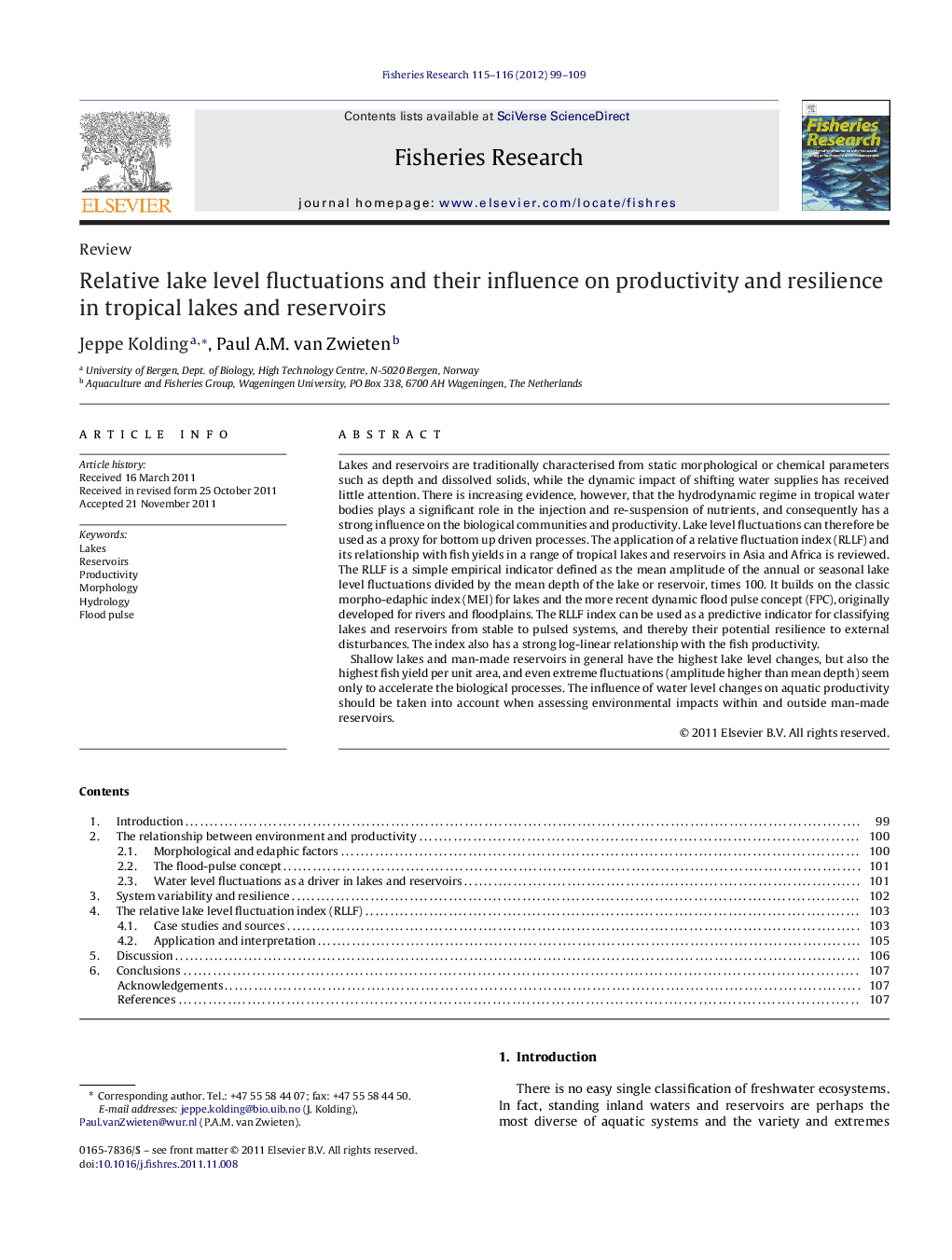| Article ID | Journal | Published Year | Pages | File Type |
|---|---|---|---|---|
| 4543469 | Fisheries Research | 2012 | 11 Pages |
Lakes and reservoirs are traditionally characterised from static morphological or chemical parameters such as depth and dissolved solids, while the dynamic impact of shifting water supplies has received little attention. There is increasing evidence, however, that the hydrodynamic regime in tropical water bodies plays a significant role in the injection and re-suspension of nutrients, and consequently has a strong influence on the biological communities and productivity. Lake level fluctuations can therefore be used as a proxy for bottom up driven processes. The application of a relative fluctuation index (RLLF) and its relationship with fish yields in a range of tropical lakes and reservoirs in Asia and Africa is reviewed. The RLLF is a simple empirical indicator defined as the mean amplitude of the annual or seasonal lake level fluctuations divided by the mean depth of the lake or reservoir, times 100. It builds on the classic morpho-edaphic index (MEI) for lakes and the more recent dynamic flood pulse concept (FPC), originally developed for rivers and floodplains. The RLLF index can be used as a predictive indicator for classifying lakes and reservoirs from stable to pulsed systems, and thereby their potential resilience to external disturbances. The index also has a strong log-linear relationship with the fish productivity.Shallow lakes and man-made reservoirs in general have the highest lake level changes, but also the highest fish yield per unit area, and even extreme fluctuations (amplitude higher than mean depth) seem only to accelerate the biological processes. The influence of water level changes on aquatic productivity should be taken into account when assessing environmental impacts within and outside man-made reservoirs.
► Fluctuating water levels enhances nutrient transfer in aquatic ecosystems. ► Productivity in form of fish yields are positively affected by lake level fluctuations. ► Lake level amplitude divided by mean depth can serve as an indicator of productivity and community resilience.
